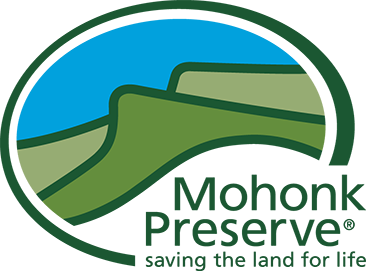The Preserve as a Learning Lab
We are at capacity for Spring 2024, please check back for programming opportunities in the future!
Choose a field study experience to meet your class’s objectives and goals. Our education programs meet the Common Core, Next Generation Science Standards, and New York State Learning Standards and can be modified according to your needs.
Inclusive Programming for Children with Disabilities
If your class includes students with disabilities, the Preserve’s award-winning NatureAccess® program may be able to accommodate your specific needs. Our experienced, professional educators have combined expertise in early childhood education, special education, and outdoor/environmental education and can adapt most programs for a wide diversity of needs and learning styles.
Guided Field Studies Grades K-8
Program Descriptions
(*) Denotes programs that can accommodate two classes.
Forest and Stream Habitat Study*
Enjoy an exciting day of nature investigation in the woods and waters! Students dip their nets into the flowing waters of the Coxing Kill, to discover a vast array of aquatic life beneath the water’s surface. A relaxing walk through the woods presents students with sensory delights: the awesome sights, smells, and sounds of a northeastern forest. Through live animal searches and discoveries, students create their own learning experiences.


Field and Forest Habitat Study*
Using a multi-sensory approach, explore and investigate the intricate web of life found in our fields and forests. Students locate, collect, and carefully identify the animals that live beneath our feet in open fields and meadows. In the forest, creature searches and animal behavior observations complement their discovery of plant and tree life and of the environmental factors that affect their growth. Hiking Trail: wide carriageways, field paths and narrow woodland footpath, 1-mile/easy.
Lenni Lenape Lifeways*
On the ancestral lands of the Lenni Lenape People, students will imagine their way back through time. A longhouse visit and participation in hands-on activities practiced by Lenape children and adults during the Contact Period inspires students to discover how these indigenous people and their rich culture thrived in a place that sustained and provided for their needs. Hiking Trail: 1-mile on easy to moderate wide carriageways and footpaths through fields and forest.


Pond Habitat Study
Students will start the day with a hike to the study site. The class will explore the water’s edge and discover the fascinating diversity of aquatic life. In small groups, students will safely collect, investigate, and identify creatures that call the pond home. Hiking Trail: wide carriageway and footpath, 1/2 mile, uphill/downhill, easy.
Ridge Habitats
Ridge focused with program goals of: 1.) exploring the cliff environment, 2.) observing, measuring, and recording a variety of abiotic and biotic factors of cliff habitat, and 3.) understanding how people, past and present, use the cliff. The Millbrook Ridge Trail affords students the opportunity to discover geology physically, as they hike atop the ridge and gaze out upon the world-class views of the Hudson Valley. Hiking Trail: 2 mile moderate to strenuous on rock slabs, narrow trails, carriageways.


Map and Compass Navigation
Students will learn map reading and compass navigation skills while out on the land. After an introduction to using a map and compass, students will complete an orienteering course working in small groups. During this program, students will learn to recognize map symbols, learn how to measure distances on a map, and learn how to take and follow a bearing using a compass. Hiking Trail: wide carriageways and field paths, 1-mile/easy.
Bonticou Crag Rock Scramble Adventure
Grades 5 and up will hike through three distinctly different environments, enjoying the unique natural features of each. Students participate in a recreational rock scramble with the goal of summiting Bonticou Crag. Rock scrambling includes hiking on ever-changing angles of rock surfaces while gaining elevation. Students learn how to move their bodies smoothly as they transition from one balance point to the next. From atop the Crag, 360º views of the Hudson Valley reward students for their efforts. This is a 3 mile round-trip hike with some moderate-to-strenuous uphill sections.

General Information and Fees
Field studies are offered in the fall (late September through early November) and in the spring (late April through early June) on weekdays only. Scheduling operates on a first-come, first-served basis.
All field studies are led by Mohonk Preserve educators, are 3.5 hours in length, and include a break for lunch. We can accommodate up two classes per day (program dependent) with a size maximum of 30 per class including faculty, students, and chaperones. A minimum adult:student ratio of 1:8 is required. The program fee is $195.
Banner photo by John Mizel
